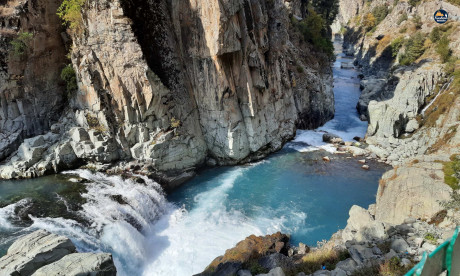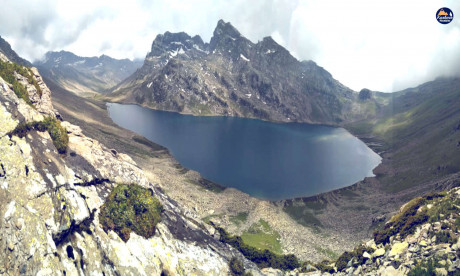Kashmir, embraced by the Himalayas, is home to numerous majestic mountains and high-altitude peaks, each contributing to the breathtaking beauty of the region. Here are some notable mountains and highest peaks in Kashmir:
- Pir Panjal Range:
- A significant mountain range in the Lesser Himalayas.
- Extends from northwest to southeast through Jammu and Kashmir, Himachal Pradesh, and parts of Pakistan.
- Average elevation ranges from 1,400 m (4,600 ft) to 4,100 m (13,500 ft).
- Sunset Peak:
- A mountain massif bordering the Poonch and Shopian districts.
- Peaks at 4,745 meters (15,568 feet).
- Located west of the Kashmir Valley, it offers a panoramic view.
- Tatakooti Peak:
- A notable mountain in Kashmir, rising to an altitude of 4,760 m (15,620 ft).
- The highest peak in the Pir Panjal Range, bordering Kashmir from the southwest.
- Apharwat Peak:
- Located in Gulmarg, it is Asia’s longest ski slope.
- Stands at an elevation of 4,390 m (14,403 ft).
- Known for skiing, sleighing, and snowboarding opportunities.
- Mount Harmukh:
- Also known as Mount Haramukh or Harmukh Ganga.
- The highest mountain in the Pir Panjal Range.
- Peaks at 5,142 meters (16,870 feet).
- Mount Kolahoi:
- Part of the Nun Kun mountain massif in the Himalayas.
- Stands at an elevation of 6,425 m (21,079 ft).
- Lies to the southwest of Srinagar.
- Nun Kun:
- The highest mountain in the Indian state of Jammu and Kashmir.
- Nun is the highest peak at 7,135 m (23,409 ft), and Kun follows at 7,077 m (23,218 ft).
- Part of the Nun Kun mountain massif in the Great Himalayas.
- Mount Haramosh:
- Located near the Siachen Glacier in the Karakoram Range.
- Stands at an elevation of 7,409 m (24,295 ft).
- Known for its challenging climbing routes.
- Sia Kangri:
- Part of the Saltoro Range in the Karakoram.
- Peaks at 7,422 m (24,350 ft).
- Lies near the disputed Siachen Glacier.
These mountains and peaks not only contribute to the stunning landscapes of Kashmir but also offer challenges and adventures for climbers and trekkers seeking to explore the Himalayan region.






